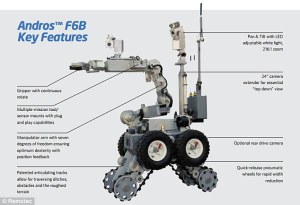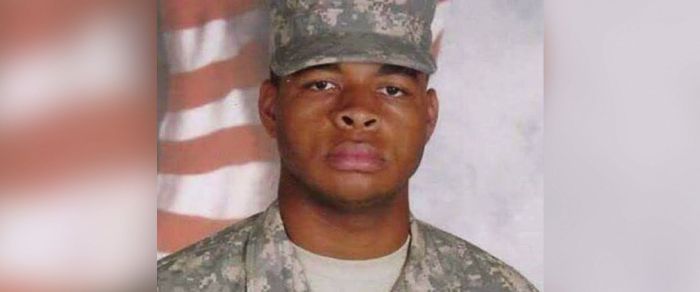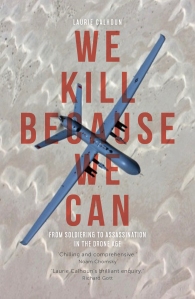
On July 8, 2016, a robot was used for the very first time to blow up a criminal suspect in the United States. Five Dallas city policemen had been slain, and several others injured. The perpetrator, Micah Xavier Johnson, was involved in a conversation with the police for a while, but when he began shooting again, the decision was taken to blow him up. The opportunity was there, the bomb-disposal robot was already in the possession of the police, and who could complain, given what this particular suspect had already done?
The robot used to blow up Micah Johnson was not a lethal drone, but it may as well have been. One might wonder how the police devised the idea of using a bomb-disposal robot to blow up a human being, but certainly the US drone program offers plenty of examples of the use of remote-control technology to incinerate, rather than capture, terrorist suspects.
US citizens have grown accustomed to their government killing people abroad, but the decision to kill by remote control in the homeland was extraordinary in that no attempt was made to incapacitate the suspect instead. In recent years, it has become increasingly clear that policemen in dangerous scenarios often opt to shoot to kill, aiming for the heart or head, not the suspect’s foot or hand. However, it is not the role of the police to execute but to take into custody suspects so that their guilt can be determined by a jury of peers and, if convicted, an appropriate penalty applied.
Despite the grisly nature of what was done to Micah Johnson, many commentators have insisted that the police chief made the right call in deciding to blow the man up. But was this in fact his call to make? The precedent set by this action would seem to be yet another step down an ever-more lethal continuum rendered considerably more so by the current US president, Barack Obama, whose policy it is to kill rather than capture suspected terrorists located abroad.
The US administration continues to claim that in all of its thousands of targeted killings, capture has been infeasible and the premeditated, intentional acts of homicide have been necessary in national self-defense, all part of the Global War on Terror. Obama’s authority to kill suspects anywhere he chooses to do so—both inside and outside areas of active hostilities—is said to derive from the Authorization of Use of Military Force (AUMF) conferred by the US congress upon President George W. Bush about fifteen years ago.
As technology has become more and more sophisticated, it is highly ironic that the restraints on killing wrought over millennia, and the great advances in institutions of justice, beginning with the 1215 Magna Carta, have been forgotten or set aside. The suspects killed in the Global War on Terror by lethal drone are presumed guilty until proven innocent, but they are denied the right to demonstrate their innocence. They are denied even the right to surrender and usually have no idea that they are about to be killed. They are simply eliminated from the face of the earth at the behest of the US president’s henchmen at a time of their choosing, as the “opportunity” arises.

The blowing up of Micah Johnson by the police was triply ironic. Not only was he trained as a sniper by the US military, but the young African American was apparently protesting against police brutality against black men in the homeland. Johnson’s desire to “kill white people” arose out of anger at the police killings of a series of black men brought to the attention of the public by the Black Lives Matter movement over the past few years. But the response of the police to Johnson’s obviously misguided mission to target policemen was to ratchet up the brutality against black men yet another notch.
Rather than being riddled with bullets, the body of Micah Johnson, a black man, was blown up in a manner befitting a condemned building, not a human being. In saying this, I do not mean to suggest that shooting to kill unarmed persons is somehow less objectionable, but only that the degree of sheer violence is much greater and the denial of the victim’s personhood highlighted by the use of a bomb to eliminate him.
After the use of a robotic device to obliterate the suspect, several Dallas officials made public statements to the effect that there was no other way to neutralize the threat posed by Micah Johnson. I can think of several. How about bombing the place where he was located with tear gas? SWAT teams certainly have gas masks in their arsenal of equipment, so the place could have been literally fumigated with gas using the same robot to deliver not explosives but agents of lachrymation. Or how about bombing the place with a gaseous form of sedative to knock him out so that the place could be secured and accessed by a team who would then be able to take the man into custody?
In this regard, the case of Micah Johnson bears comparison to that of Osama bin Laden, who was also executed when in fact he might have been shot with tranquilizer plugs rather than bullets. His unconscious body could have been lifted out of Abbottabad just as his corpse was, but the decision was taken by Obama to kill him instead. Bin Laden was widely reviled as the mastermind behind the terrorist attacks of September 11, 2001, and if not the architect, he was at the very least their inspiration, given his enthusiastic exhortations that Al Qaeda members wage jihad against the United States in retaliation to what he regarded as inexcusable war crimes, especially in the 1991 Gulf War and its aftermath in Iraq.
The execution of Bin Laden and Micah Johnson are similar in another, even more significant, way. Both acts of killing look like exceptions, which took place in extraordinary circumstances. However, as precedents, both can be seen to set in motion a series of future actions modeled on them, because the exception swiftly transforms into the rule once initial inhibitions against intentional, premeditated homicide have fallen by the wayside. Under Obama’s greatly expanded drone program, which began in January 2009, shortly after the new president assumed his office, assassination of suspects has been rebranded as “targeted killing” and carried out primarily through the use of Hellfire missiles delivered by Predator drones.
The drone program and the execution of Bin Laden were mutually reinforcing. If lower-level “foot soldiers” whose names are not even known may be eliminated by drone, then why wouldn’t Bin Laden be fair game for elimination as well? Both the drone program and the execution of Bin Laden served to inform a further escalation of lethality when US citizen Anwar al-Awlaki was executed in Yemen by his own government.
Was Al-Awlaki anything like Bin Laden? Of course not. But Al-Awlaki was mythologized as an execrable bogeyman in the mainstream media to the point where most Americans came to believe that he was morally equivalent to Bin Laden. To this day, most people have no idea that Al-Awlaki spoke out against the crimes of 9/11. He was a voice of moderation at the time, calmly counseling the government not to make the mistake of acting in ways which could easily be misconstrued as waging a war on Islam.
That was precisely what the US government proceeded to do. They invaded Afghanistan in 2001 and Iraq in 2003, despite the fact that most of the perpetrators of 9/11 hailed from Saudi Arabia, the government of which was given a free pass. Rather than focusing on those ultimately responsible for 9/11, the US government set out to harass Muslims such as Anwar al-Awlaki to such an extent, using both the FBI and foreign governments (in his case, President Saleh of Yemen), that in some cases the targeted suspects transmogrified into self-avowed enemies.
Was Anwar Al-Awlaki an operational terrorist, or was he a propagandist and cheerleader of sorts for jihad? Whatever source of inspiration some of the apprehended perpetrators of terrorist plots may have drawn from Al-Awlaki’s sermons, the fact remains that they and they alone chose to carry out violent acts. The evidence supposedly convicting Al-Awlaki of the capital crimes allegedly justifying his summary execution without trial continues to be withheld on grounds of State Secrets Privilege under a pretext of national security.
Exceptions quickly transform into rules when more and more agents agree to follow suit. Case in point: only a few years after Obama’s 2011 decision to execute Al-Awlaki by lethal drone, then-UK Prime Minister David Cameron chose in 2015 to eliminate two British nationals located in Syria using lethal drones. Now, apparently, this is what the US government and its allies do. Find people, even fellow citizens, who appear to be up to no good, and if they are located in a Third World country or war zone, then it’s supposed to be perfectly fine to execute them without trial. Just make sure that you use a missile so that you can call it an “act of war”.
In the case of Micah Johnson, the Dallas cop killer who was blown up by a robotic device operated by remote control, people may say that he obviously deserved to die and the police had no intention of risking the lives of any more of their comrades. But there were other “suspects” identified at the time of the crime as well, who might also have been blown up using robots, were they available, and had those suspects been located.
One fellow’s face was spammed all over Twitter. It turned out that he was not involved. What if some vigilante had taken him out, under the assumption that he needed to be neutralized? What if the angry Dallas police force had located that suspect and blown him up for the very reason that he adamantly denied having done anything wrong? He would have become the homeland analogue to collateral damage, now that the weapons of war are being used by law enforcement.
The risk aversion of war makers steadily increased over the course of only a couple of decades to the point where sacrificing the lives of civilians on the ground “outside areas of active hostilities” has come to be considered perfectly acceptable among US leaders. These are places where deadly missiles are being directed toward suspected terrorists even though they are not threatening anyone with death at the time when they are killed, and least of all US citizens. Indeed, the targets are usually unarmed, located as they are “outside areas of active hostilities”.
Given how the drone program inclined administrators toward killing rather than capturing Bin Laden, and given how the killing of Bin Laden then inclined administrators to kill even US citizen suspects by lethal drone, I predict a similar lethal turn in law enforcement in the homeland in the aftermath of the obliteration of Micah Johnson by remote control. It does not matter that his case was exceptional. The case of Bin Laden was exceptional, too.
The same risk aversion seen among the “light footprint” war makers led by Obama will begin to infect police departments all over the United States as the commanders of men in blue become less and less willing to allow them to die, even when the risk of killing innocent bystanders will obviously increase. It is of course rational to attempt to protect soldiers and policemen. But is it not finally time to reconsider the infinite price in innocent life being paid in the quest to kill allegedly evil people, whose importance is given higher priority than anything else? Is this focus on death to the exclusion of all other considerations not the ultimate expression of nihilism?
What is most remarkable of all about the myopic, glaucomic, and amnesiac paradigm of lethal centrism is that given the never-ending series of mass killings being perpetrated all over the place—in Paris, Brussels, San Bernardino, Orlando, Nice, Dallas, Baton Route, Munich—we now have ample evidence that this single-minded focus on lethality is not keeping people in the West safe.
As a matter of fact, “Kill don’t capture” and “Strike first, suppress questions later”, the Obama administration’s signature policy, serves as an incredibly destructive example to lone wolf killers, would-be jihadists, and angry activists alike who emulate governments when they decide to take up arms and perpetrate mass homicide as a way of expressing their grievances.

7 thoughts on “Exception or Precedent? The remote-control killing by police of a suspect on US soil”